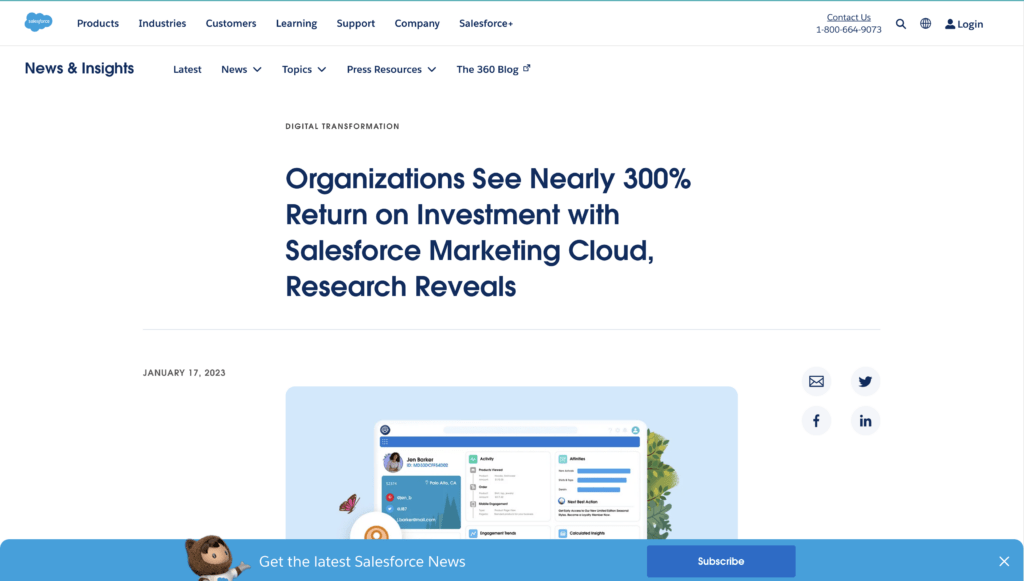With the end of the year approaching, many company leaders look to gauge their overall success and plan for the next year. A key component to calculating overall success is determining your business ROI.
But what is ROI and why is it an important metric of success?
In this post, we discuss:
- What is ROI in business
- How to calculate ROI in a business?
- What is a good ROI for business?
- Walking through EBQ’s business investment return calculator
- Benefits of using ROI
- Limitations of using ROI
Download the ROI Excel Template
Access our ROI calculator to start accurately calculating and projecting your workplace return on investment.
What is ROI in Business?
In business, ROI (return on investment) is a percentage metric that calculates how much profit you’ve made against the investments you’ve made.
Given how simple this metric is, many business leaders like to use this KPI to determine how much they’ve grown over a given period — often a year.
However, calculating ROI is not just used for determining the entire year’s worth of the company. Other areas of application include:
- Assessing the success of your financial investment (e.g. stocks and bonds)
- Defending the cost of investing in a new solution
- Determining each department’s output against
This means that ROI is a universally accepted measure of growth in the business world.
The ROI Formula
To calculate your return on investment, you need two figures:
- Your net profit (which is taking your overall profit and taking away the costs)
- Your costs*
*Note: There are many costs associated with calculating ROI. We’ll discuss known and hidden costs you’ll need to consider when calculating your return on investment.
From there, plug in this formula to determine your final return on investment:

What are some costs to consider?
Our advice to fellow business owners is to be aware of two different types of business operation costs:
- Known costs
- Opportunity costs
Known costs are easily calculable costs that you can immediately take inventory of.
Some examples include:
- Customer Acquisition Cost (CAC)
- Employee salary
- Employee benefits
- Equipment
- Office rental space
To make your life easier, using known costs to calculate your ROI will suffice. That said, known costs don’t tell you the whole picture.
For example, some business leaders often miss the opportunity costs associated with running a business. Opportunity cost is the hidden trade-off cost of investing in one sector of your business over the other.
Take the hiring process as an example. If you decide to build your own sales team, your HR and sales leaders need to spend time to:
- Build a large enough applicant pool
- Conduct market research to create a competitive compensation package
- Screen and interview each candidate
- Onboard a new hire
- Train and upskill based on learned best practices
The opportunity cost here is that the amount of time spent on hiring one salesperson is time that could have been used to improve your product and processes. This hiring process doesn’t even factor in the possibility of any turnover effects — such as severance packages or the process of rehiring to fill the open position.
It’s because of such opportunity costs that many organizations turn to outsourcing organizations. Take our outsourced lead generation team as an example: we’re able to reduce such opportunity costs by providing you with an entire dedicated team from the get-go. Because we have extensive experience working with a wide range of industries, we’re able to integrate your industry’s best practices with our proven processes in a matter of days.
Outsourcing can also reduce your turnover effects by mitigating the effects of losing a team member. Since every specialist is upskilled and trained on current best practices, another specialist from the outsourcing agency can step in and quickly take over the now-open role. That way, your company doesn’t need to spend countless hours rehiring to fill the same position.
If you’re considering outsourcing your sales team, be sure to consider these challenges beforehand. For example, make sure you’re granted full transparency to the outsourcing agency’s success. That way, you’re able to quickly adjust your strategies to maximize success.
What is a good ROI for a business?
You should be aiming for an ROI of >10% year-over-year. However, keep in mind that this benchmark is dependent on your company size and industry sector.
Generally, service-based industries face lower ROI margins. That’s because you typically have to spend an additional 25-35% per head to cover employee benefits to retain high-performing team members. Of course, you’ll need to ensure your entire customer base has adequate labor coverage to continue delighting customers — thus increasing operation costs.
On the other hand, SaaS industries often benefit from higher profit margins. Since you can deploy a singular product across multiple customers, you don’t need as many people to service your customers. You can even outsource your customer service team to push these costs further down and widen your profit margins.
Now that you know how to calculate your return on investment, let’s walk through our Excel template to help you drill down on your ROI calculations.
Walking through EBQ’s Business Investment Return Calculator
Before you download your ROI calculator, make sure you have your gross profit figure ready in hand. To calculate your gross profit, use the following formula:

From there, follow the worksheet to input all of your known business expenses. Your ROI metric will then be calculated at the bottom of the worksheet. Make sure to note any additional expenses not listed in the template.
We’ve also attached a “Labor Costs” worksheet for your reference. There, you’ll find a typical breakdown of what it costs to hire an internal sales development team. If you’re looking for ways to reduce costs, consider outsourcing your sales development team. That way, you can get a whole team of experts for a fraction of the cost of hiring internally.
Download the ROI Excel Template
Access our ROI calculator to start accurately calculating and projecting your workplace return on investment.
Benefits of using ROI
As we previously mentioned in this post, the ROI metric is a universally accepted KPI for success. That’s because ROI is relatively simple to calculate and is an objective number with clear benchmarks for your company.
You can apply this ROI aspect of your business as well. You can also use ROI to sell your products or services to decision-makers by providing an average ROI of those who have used your product. This figure showcases the potential acceleration of profit businesses can see once they invest in your solution.
But keep in mind that there are considerable drawbacks to just relying on ROI to determine success.
Limitations of using ROI
Generally, strictly using return on investment as the only KPI can be problematic as it does not consider nuances in the number produced.
For example, the ROI metric does not consider:
- Your business operation: If you’re in the early stages of building your company, your ROI tends to be lower as you’re borrowing money from investors to fund your business.
- Hidden costs: For example, the effects of inflation tend to be overshadowed by the ROI figure.
- Time expense associated with the investment: If you’re using ROI to compare growth, make sure you’re measuring against the same timeframe for a more accurate picture.
While using ROI is still a valid way to evaluate success, make sure you and your stakeholders use other metrics to give you a complete picture of your business health.
How to improve your business ROI
There can be a myriad of reasons as to why you’re seeing a lower ROI number. Typically, it can be boiled down to three main factors:
- Poor processes: We’ve seen a lot of businesses struggling to standardize their process to reflect on what’s worked for them.
- Unfit specialists: Whether it’s because of a lack of training or because of a lack of experience, unqualified team members will hurt your business by reducing productivity and results.
- Inability to track data: The key to company success is being data-driven, so tracking every valuable data is vital to gauging your company’s health.
Regardless of why your ROI is low, we recommend investing in a consultant. Not only do they have experience helping other clients, but they can also understand what it takes to grow a business.
If you’re looking for a team of experts, consider working with EBQ. With over 15 years of experience building other businesses, we know how to scale your businesses based on your current needs and unique business workflows.
TLDR; How to Calculate Your Business ROI
Mastering the art of calculating business ROI is essential for any B2B organization looking to make informed decisions and optimize its investments. By following the comprehensive strategies outlined in this blog post, businesses can gain valuable insights into the performance of their initiatives, identify areas for improvement, and ultimately enhance their overall profitability.
If you have any questions about how outsourcing can help maximize your ROI, feel free to reach out to one of our Consultants. Our 15+ years of experience allow us to audit your business workflows and find opportunities — as well as accelerate your business goals.




